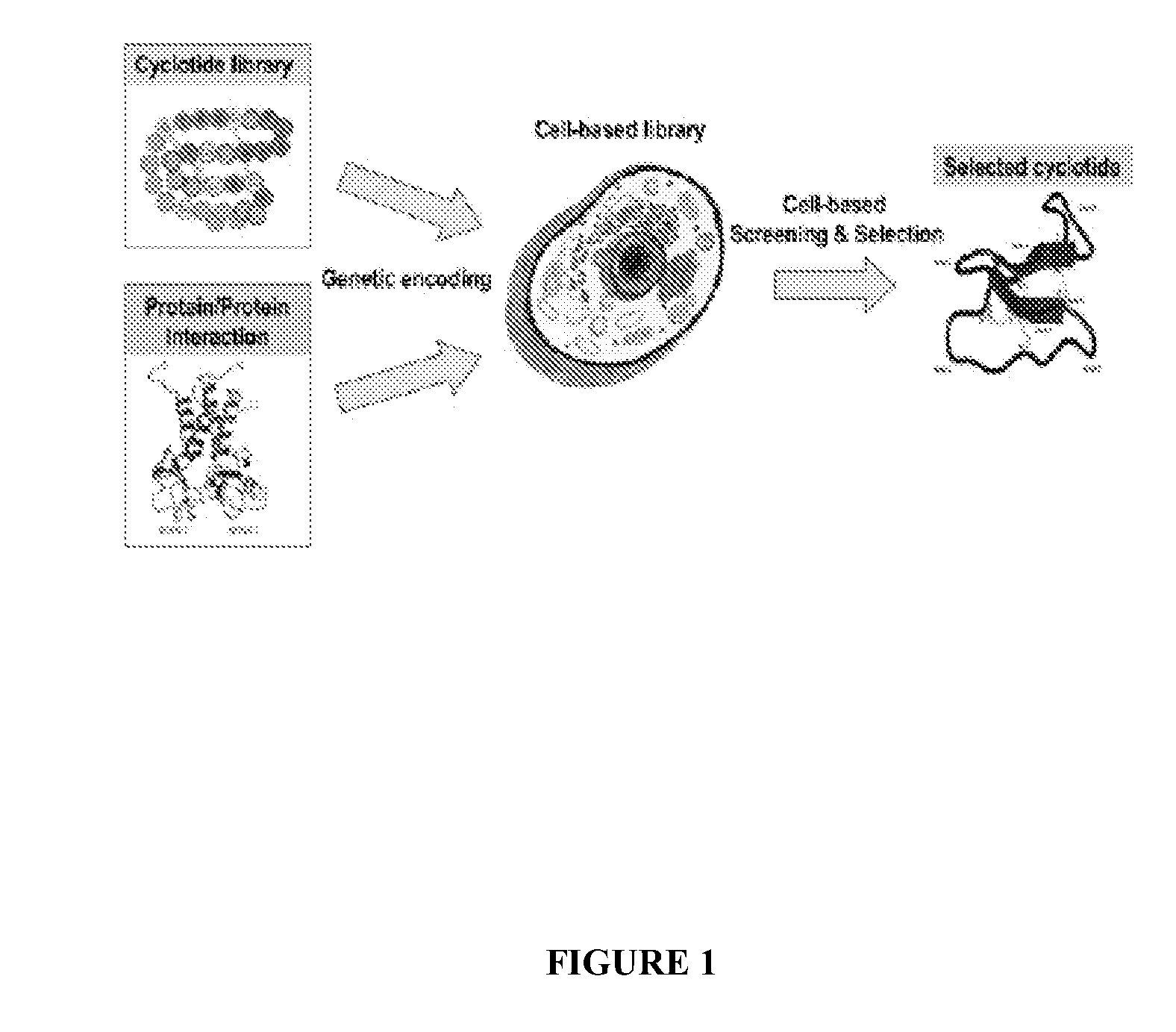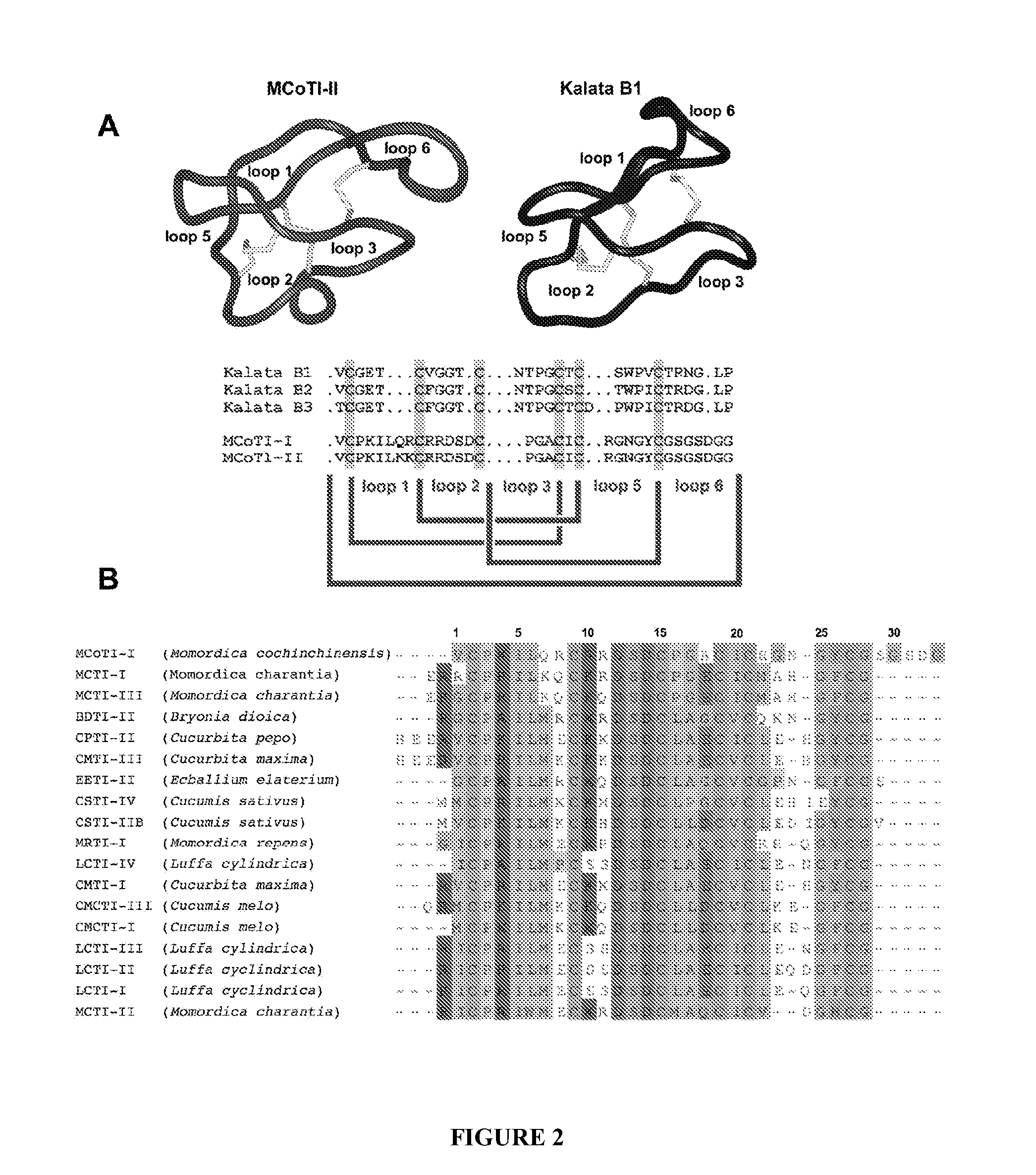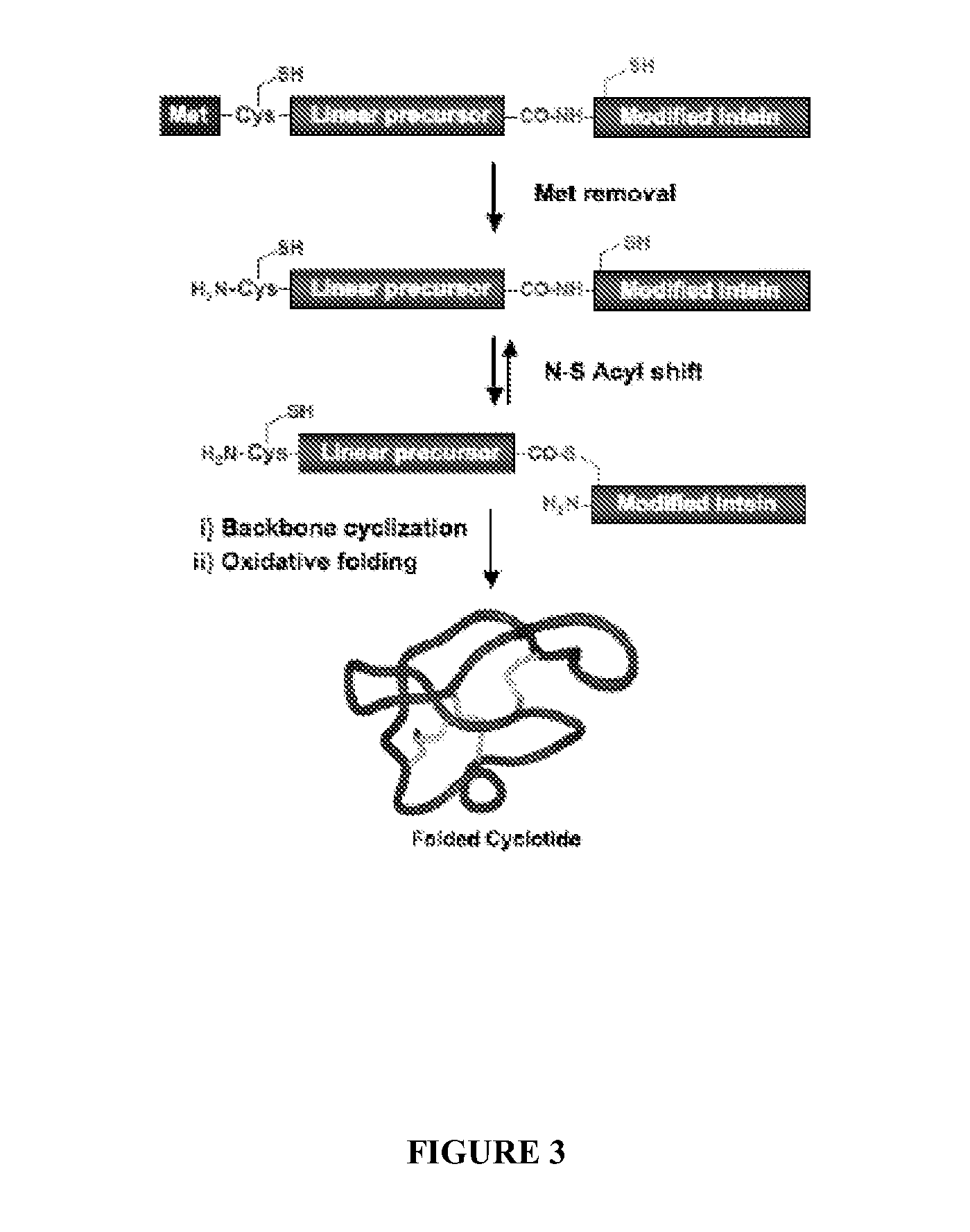Compositions and methods for the rapid biosynthesis and in vivo screening of biologically relevant peptides
a biosynthesis and in vivo screening technology, applied in the direction of peptides, fluorescence/phosphorescence, nucleotide libraries, etc., can solve the problems of minimizing slowing down the whole process, and selecting binders with poor specificity, so as to speed up the whole process, minimize the selection of universal binders, and high specificity
- Summary
- Abstract
- Description
- Claims
- Application Information
AI Technical Summary
Benefits of technology
Problems solved by technology
Method used
Image
Examples
descriptive embodiments
[0108]In one aspect, a method is provided for identifying or determining if a test agent inhibits formation of a biologically relevant complex in vivo in a cell, wherein the cell comprises, or alternatively consists essentially of, or yet further consists of, a template plasmid or vector comprising a first discreet origin of replication operatively linked to a recombinant polynucleotide encoding a N-terminal leader sequence to generate an N-terminal Cys residue, a peptide template to be cyclized and an intein modified to generate a C-terminal thioester in vivo and a reporter plasmid or vector comprising a second discreet origin of replication operatively linked to one or more interacting domains and a lethality reporter and / or a detectable label, and where the method comprises culturing the cell under conditions to express the peptide template and subsequently culturing the cell under conditions to express the reporter plasmid or vector; and selecting cells, thereby determining if a...
PUM
| Property | Measurement | Unit |
|---|---|---|
| Fraction | aaaaa | aaaaa |
| Fraction | aaaaa | aaaaa |
| Fraction | aaaaa | aaaaa |
Abstract
Description
Claims
Application Information
 Login to View More
Login to View More - R&D
- Intellectual Property
- Life Sciences
- Materials
- Tech Scout
- Unparalleled Data Quality
- Higher Quality Content
- 60% Fewer Hallucinations
Browse by: Latest US Patents, China's latest patents, Technical Efficacy Thesaurus, Application Domain, Technology Topic, Popular Technical Reports.
© 2025 PatSnap. All rights reserved.Legal|Privacy policy|Modern Slavery Act Transparency Statement|Sitemap|About US| Contact US: help@patsnap.com



